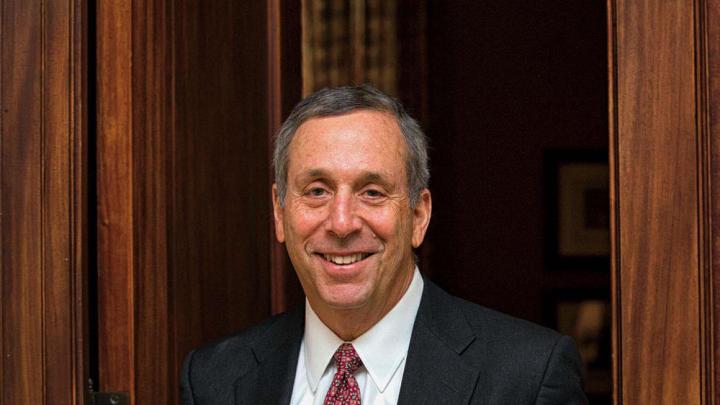One of the unexpected pleasures of my new role is reading emails and letters from individuals who want nothing more than to share their hopes with the president of Harvard. There are, as you might expect, inquiries about application processes and requests for admissions advice, but I also have received designs for a University flag, ink drawings of plants and flowers, and book chapters and manuscripts on a remarkable range of topics. One especially creative ten-year-old boy sent me photos of a human body fashioned out of popsicle sticks and a computer prototype made from cardboard. Ideas and inventions such as these are not only a welcome diversion but also a constant reminder of what our institution represents to people of all ages all over the world.
Harvard stands for excellence. We set the standard because our predecessors devoted themselves to attracting the very best people in every possible field to teach, work, and study here. Centuries of careful and concerted efforts have created an institution worthy of admiration, and it is our responsibility to continue that tradition. I have been impressed since I took office by the variety of ways it is pursued throughout Harvard. Our faculty and students are constantly pushing the boundaries of knowledge. Their scholarship and research demand an unfailing willingness to charge down dark alleys knowing that failure is often common—and that progress is made through trial and error. Society loves to celebrate “Eureka!” moments, but the work of discovery and innovation is messy and laborious. It requires creativity and imagination, grit and determination, but mainly hard work. Excellence is never achieved easily.
Our faculty and students could not advance our mission alone. The University is fortunate to have staff members who take great pride in their contributions to this special place. Last summer, I had the opportunity to attend Harvard Heroes, an annual employee recognition event that celebrates the extraordinary contributions of individuals at all levels of the institution. I learned about an archivist who infused undergraduate courses with extraordinary materials from our special collections, a director of community programming who made the University more accessible to our neighbors in Allston, and a facilities superintendent who kept Harvard College Observatory from being damaged in a historic flood. They were joined by colleagues who launched new programs and tools designed to increase efficiency and reduce cost, as well as initiatives to foster diversity and spark collaboration.
Everyone who works and studies at Harvard today contributes to our rich learning environment in a way that is unique, but we all share a commitment to excellence. This commitment is not a birthright, and should never be confused with an embrace of elitism. The standard we set is the result of recruiting the best and the brightest of each generation—students, faculty and staff who have distinguished themselves in every possible dimension. We try to look at the whole person rather than any narrow set of metrics. We work hard to make Harvard accessible to students regardless of their ability to pay, and we scour the world in our search for talented faculty. Moreover, we embrace diversity because we learn from our differences. Harvard would be a dull place if we all shared the same backgrounds, interests, and experiences.
When I welcomed first-year students last semester, I told them they would learn as much from each other as they would from the faculty. As alumni, we value the time we spent on campus, where the meaning of excellence was demonstrated not only in classrooms and laboratories, but also across dinner tables, on playing fields, and on the stage. In living and learning with people very different from ourselves, we discovered opportunities to change and grow that we may not have had elsewhere. For most of us, our classmates and our teachers pushed us to be better. If there is one thing I want my many correspondents to understand, it is that Harvard is as challenging and exciting a place as they imagine it to be. It is a place that urges us to ask again and again what more we might achieve if we dare to commit ourselves to doing our very best work.









